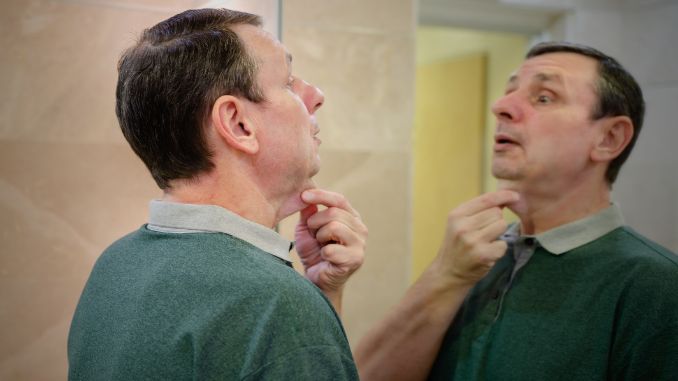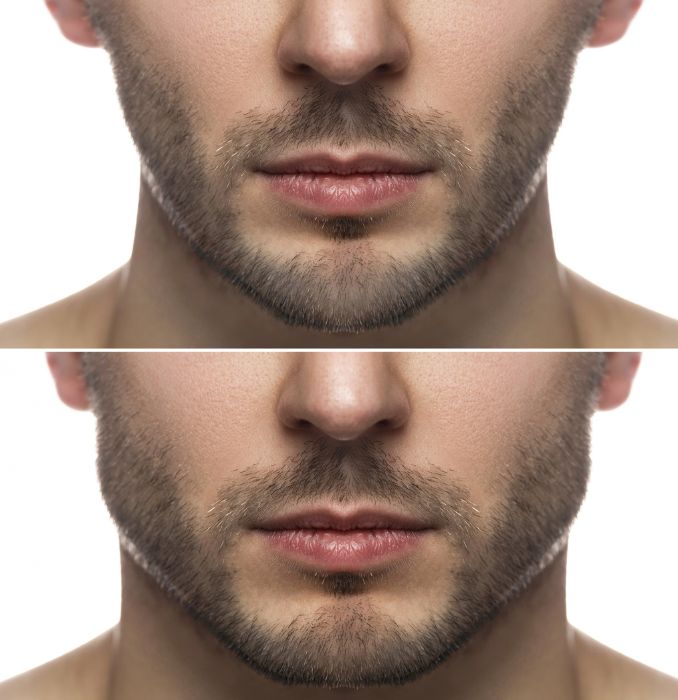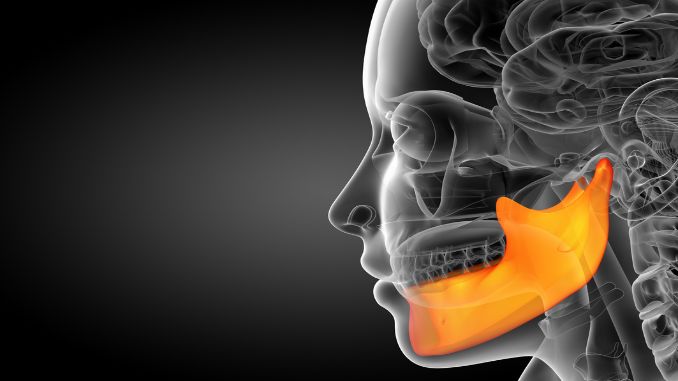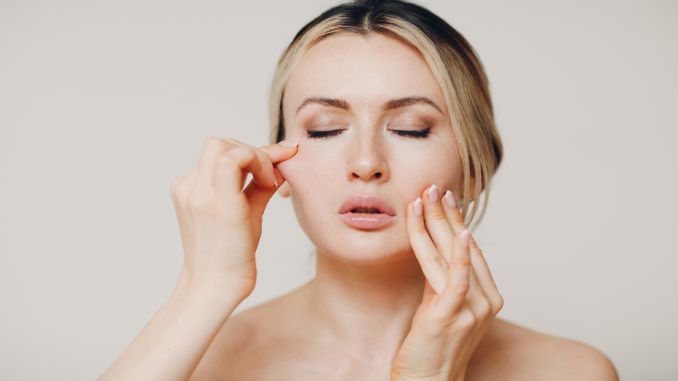Mewing, developed by orthodontist John Mew, involves placing your tongue against the roof of your mouth. This technique may help improve tongue posture, potentially influencing jawline definition and facial alignment.
What is Mewing and How Does it Work?

Mewing is a social media trend [¹] that teaches how to position the tongue, lips, and jaw. Developed by Dr. John Mew, it aims to improve facial looks and align teeth by pressing the tongue to the roof of the mouth. This can lead to a more defined jawline, improved facial symmetry, and overall facial aesthetics.
Mewing involves applying gentle pressure to the upper and lower jaw bones with the tongue. By keeping the right tongue posture, it can help align the teeth and improve facial structure, leading to a better jawline and facial appearance. Mewing exercises, which are easy and non-invasive, strengthen facial muscles and enhance symmetry. Anyone can do them daily to potentially improve their appearance.
The Benefits of Mewing Exercises

Here’s how adding mewing to your daily routine can help you:
1. Boost in Facial Aesthetics
Mewing, by keeping your tongue properly on the roof of your mouth, strengthens jaw muscles and improves facial balance, leading to a nicer appearance. This can boost your confidence and attractiveness.
2. Enhanced Breathing and Posture
Mewing, which involves proper tongue placement, can improve breathing and lessen snoring by opening airways through nasal breathing.
3. Toning of Facial Muscles
Facial exercises [²] like chin tucks and keeping your tongue in the right position help tone your face and neck. These exercises can shape your jawline and give you a younger look, providing an alternative to jaw surgery
4. Correction of Facial Symmetry
Mewing helps make the face more symmetrical by encouraging even growth, which can prevent problems like loose or chipped teeth. Regular exercises for tongue position can lead to more balanced facial features.
5. A Natural Solution
Mewing offers a simple, non-surgical way to improve facial features. By adjusting how you position your tongue and adding activities like chewing gum, you can enhance your face's appearance without any medical treatments.
Understanding the Science Behind Mewing

Mewing exercises are based on the idea that the way you hold your tongue can shape the growth and alignment of your facial bones. Normally, the tongue should rest at the roof of the mouth, supporting proper facial development.
However, bad habits like mouth breathing can lead to poor tongue posture, affecting the jawline and facial symmetry. Mewing aims to fix these habits by encouraging the correct tongue position, which can help promote better facial structure and a more defined jawline. This technique uses established orthodontic principles to potentially enhance facial aesthetics.
Mewing Techniques for Beginners
Now that you know the basics of mewing, let’s look at some techniques and exercises. Whether you’re new to this or have tried it before, these exercises will help you get a stronger jawline and better facial balance.
1. Proper Tongue Posture
Mewing exercises involve keeping your tongue in the right position. To do this, place your whole tongue against the roof of your mouth, with the tip just behind your front teeth and the back part against the soft area at the top. Keep your tongue like this all day, even when you sleep.
2. Chin Tuck
Chin tucks are an easy exercise that strengthens neck muscles and improves posture. Begin by standing or sitting straight with relaxed shoulders. Pull your chin down toward your chest while looking straight ahead. Hold this for a few seconds, then let go. Do this several times a day to help tone your neck muscles and improve your posture.
3. Tongue Sweeps
Tongue sweeps are a good exercise to make your tongue stronger and improve how you hold it. Start by putting the tip of your tongue just behind your front teeth on the roof of your mouth. Then, slowly move your tongue from the front to the back, pressing lightly against the roof. Do this exercise a few times each day to help strengthen your tongue muscles and keep your tongue in the right position.
Advanced Mewing Exercises for Advanced Results

Once you get the hang of basic mewing, you're ready to improve your facial look even more.
Try these advanced routines:
1. Tongue Chewing
This tough exercise works your jaw muscles to sharpen your jawline. Place the tip of your tongue against the roof of your mouth with a bit of pressure. Pretend you're chewing gum by moving your tongue like you're chewing. Doing this every day strengthens your jaw muscles, giving you a more defined jawline.
2. Resistance Training
Add some resistance to strengthen your face and neck muscles. For example, put a finger under your chin and push up gently while keeping your tongue in the right position. This can help strengthen your jaw and neck muscles, making your face more symmetrical and your jawline more defined.
3. Correct Posture Swallowing
Mastering swallowing with proper tongue posture further ingrains the habit of maintaining optimal tongue placement throughout the day. With your tongue pressed against your mouth's roof, swallow while keeping it in position. This strengthens facial and neck muscles, supporting proper facial growth.
It's important to note that there is limited scientific proof for the effectiveness of mewing. Most evidence is anecdotal, and few detailed studies have explored its long-term effects. More research is needed.
Face Yoga Exercises for Facial Muscles

Combining face yoga with mewing provides a full approach to improving facial looks. Face yoga involves exercises that work your facial muscles. It's becoming popular as a cheaper, less invasive alternative to surgeries or treatments like facelifts and botox. In Brazil, it's even seen as a specialty in speech-language pathology.
The study published in Aesthetic Surgery Journal reported positive outcomes in doing facial exercises such as reduced wrinkles, improved facial expressions, and reduced facial sagging.
1. Forehead Smoother
Put both hands on your forehead with palms facing inward and spread your fingers out between your eyebrows and hairline. Softly glide your fingers outward across the forehead, applying gentle pressure to firm the skin. Repeat 10 times to help reduce forehead wrinkles.
2. Eye Circles
Place your index fingers under each eye, pointing towards your nose. Hide your teeth with your lips and make small outward circles under the eyes. Repeat 10-15 times to reduce eye puffiness and fine lines.
3. Cheek Lifter

Open your mouth to make an "O" shape. Pull your upper lip over your teeth and smile to raise your cheek muscles. Place your fingers gently on the upper part of your cheeks. Then relax your cheek muscles to lower them and lift them back up. Repeat 10-15 times to firm and tone the cheeks.
4. Jaw and Neck Firmer
Look upwards, pressing your tongue against the roof of your mouth. Smile and swallow while tilting your head slightly back. Repeat 5 times to tone the jawline and neck area.
5. Fish Face
Suck your cheeks and lips inwards like a fish. While holding this face, try to smile. Hold for 5-10 seconds and repeat 5 times to tone and slim the face.
Take a deep breath in through the nose, then widely open your mouth, stick out your tongue downwards, towards the chin, and forcefully exhale out through the mouth. Repeat 3-5 times to release tension and tone facial muscles.
Conclusion: Embrace the Power of Mewing for a Stronger Jawline and Improved Facial Symmetry
Mewing exercises are a natural way to improve your facial structure and get a more defined jawline. By practicing correct tongue posture and consistent exercises, you can gradually enhance your facial appearance. Remember, results vary for each person, so keep realistic expectations and appreciate your unique features.
Want to strengthen your jawline and improve facial symmetry with mewing exercises? Check out our Neck Pain Solved program for exercises that complement mewing and enhance your results.
Frequently Asked Questions
Do mewing exercises work?
Mewing involves holding your tongue against the roof of your mouth, aiming to improve your facial structure and jawline. Results vary based on age, genetics, and consistency. While some notice changes, scientific support is limited. It may help with posture and breathing, but outcomes differ for everyone.
How many times should I mew a day?
Mewing involves constantly keeping your tongue on the roof of your mouth, not doing repetitions. Aim to make it a habit, allowing your tongue to naturally rest there to potentially benefit your facial structure.
What age is too late to start mewing?
Mewing, or practicing proper tongue posture, can benefit people of all ages by improving breathing and posture. Though changes may be subtler in adults, they help promote healthier oral habits and potentially reduce snoring.
How long does it take to see results from mewing?
Mewing results differ based on age, genetics, and practice consistency. Some see quick, slight improvements, while others need months for major changes. Regular, daily practice is essential for success.








